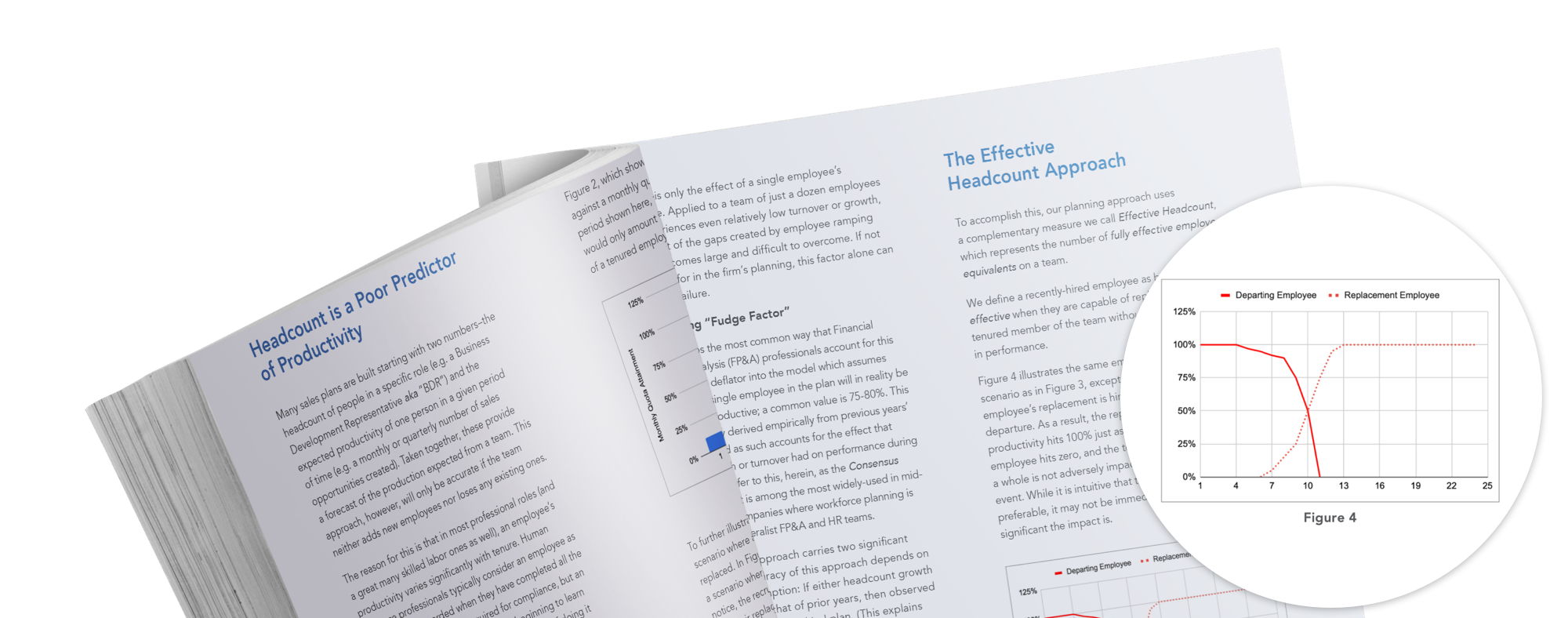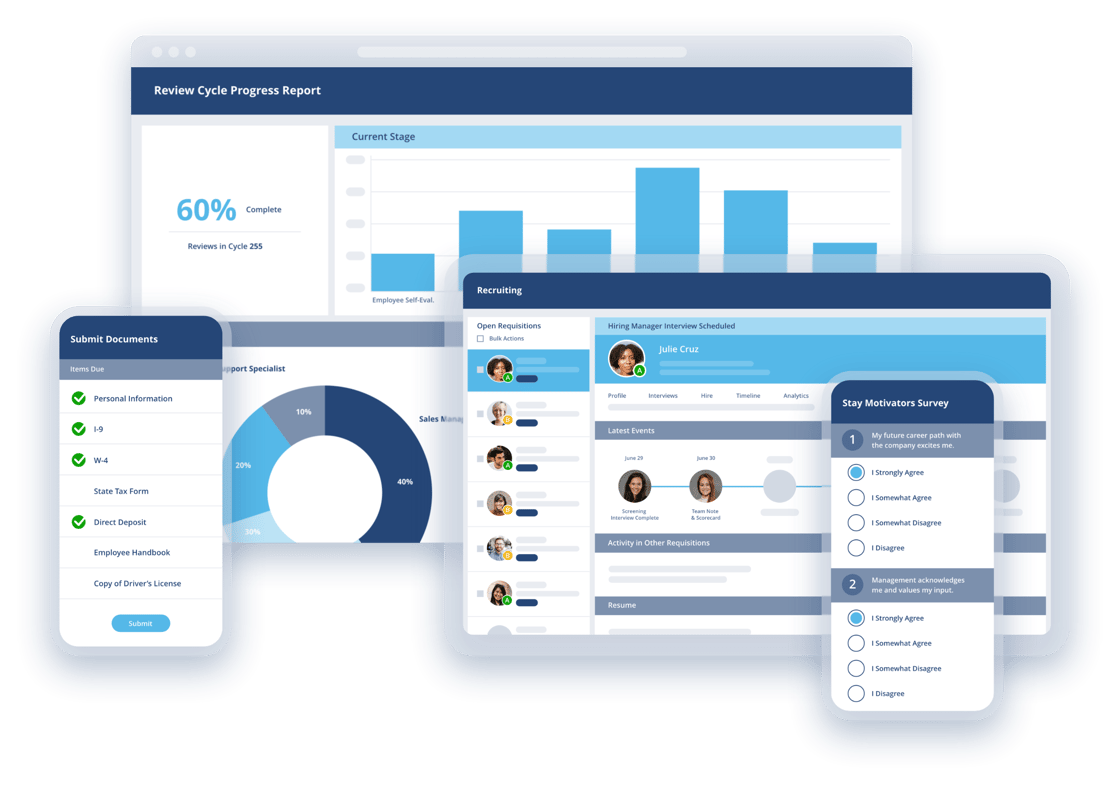According to Mercer, 99% of companies are facing talent challenges of some kind in 2023. Many are experiencing an increase in quiet quitting, and 50% expect to have difficulty meeting the demands of their talent models. In addition to a possible recession and the need for empathetic, people-first strategies, your human resources team has its hands full this year.
An effective talent management strategy can help you meet these challenges with confidence. Talent management refers to all of the different ways companies engage and retain their people. Its processes include onboarding, performance, learning and development, recognition, and employee engagement.
You may have noticed that recruiting and hiring aren’t on the list — that’s because talent management is about how companies manage their existing employees. Read our post on talent acquisition vs. talent management to dig into the differences.
If you want to improve your talent management strategy to be proactive against challenges, you’re in the right place. Strategies may not be the same for every company, but will include these seven key talent management components.
99% of companies are facing talent challenges. Beat those challenges with a solid #TalentManagement strategy:The 7 Key Components of Talent Management
1. Strategic HR Planning
As with any initiative, talent management requires a plan to be successful. Start out with a strategic plan that aligns with business and department goals.
Your plan should answer questions like:
- Who do you need to hire in order to reach business goals?
- What skills and experience will your qualified candidates need to have?
- What are the goals they need to achieve in their roles?
- What kind of training will employees need?
- How will your company measure employee performance?
- What happens when employees quit or are terminated?
Talent management entails thinking through every stage of the employee journey and predicting — and preparing for — what comes next.
2. Onboarding
New hires may be employees on paper, but don’t assume they have a strong connection to your company just because they signed the offer letter. Onboarding is one of the most consequential components of talent management and the employee life cycle. As Harvard Business Review puts it, onboarding “can make or break a new hire’s experience.” It’s your company’s chance to make new employees feel welcome and prepared, so they’re more likely to stay — and to be great employees.
The evidence supports the importance of the employee onboarding process:
- Implementing onboarding programs increased new hire productivity by as much as 62 percent.
- Employees who had an exceptional onboarding experience are nearly three times as likely to be extremely satisfied with their workplace.
- New hire retention increases with great onboarding — data shows higher retention rates ranging from 50-82 percent.
3. Employee Retention
“While no single strategy can ward off a restructuring or reorganization, internal mobility, and talent redeployment can support your organization’s growth and innovation, avoiding the need to downsize and retaining employees by offering skill development pathways." - via Forbes
Employee retention is an inherent part of many of the key components of talent management, but it’s also its own initiative. It should be an ongoing focus for HR professionals, but there’s no doubt that this year, it’s harder than usual to retain talent. Even with recent layoffs (especially in the tech sector), companies are struggling to find and hire candidates with the right skills. In response, companies are turning to modern solutions like HR software, upskilling, and “re-recruiting” to hold onto top talent.
Here are a few software tools your HR team can use to advance employee retention strategies:
- Stay interviews reveal why longtime employees are happy at your company.
- Employee engagement surveys give you insight into how your workforce is feeling about a range of topics, including DEIB efforts and general engagement.
- Recognition programs help motivate employees and make them feel appreciated.
4. Learning and Career Development
As we mentioned, the practice of reskilling or upskilling employees is higher on HR’s priority list this year, complete with a catchy new name — “quiet hiring.” Faced with skills gaps and a lack of qualified candidates, companies are instead teaching those skills to the employees they already have. Some are hiring independent contractors into full-time positions or shifting employees to new departments.
Learning and development are not limited to on-the-job training or quick courses. It also means building career paths for roles, offering continuing education benefits, and working with employees to find opportunities specific to their strengths. Employee development statistics show that it boosts engagement, retention, and even up to 24% higher annual company profits.
5. Performance Management
Your talent management processes aren’t complete without performance management. This component of talent management is indispensable — employees need to know how success is defined and how they’re doing at work in order to reach their goals.
Among their myriad benefits, performance management systems help:
- Clarify what employees are expected to accomplish
- Establish a regular cadence for giving employee feedback
- Highlight high performers and address performance issues
- Set fair, standardized criteria for performance
- Provide evidence to support actions like termination, performance improvement plans, promotions, and raises
6. Role Transitions
It’s only natural that your employees transition out of their roles eventually, whether they resign, retire, switch roles, or are promoted or terminated. But what happens to team productivity when turnover — whether predictable or unpredictable — happens? Are your teams prepared to handle these interruptions without impacting productivity, or do goals consistently fall off track when someone leaves?
Your HR team can create plans for different turnover and role transition situations:
- Headcount planning — especially ClearCompany’s Effective Headcount Approach — eliminates uncertainty and helps teams stay on track with their goals, even when turnover happens.
- Succession planning is a business strategy for replacing employees in critical leadership roles. Your company should have a number of succession plans for different situations, including long-term and emergency plans.
- Onboarding programs aren’t just for brand-new employees; they’re also for current employees who are transitioning into a different role.
7. Talent Management System
End-to-end talent management systems are becoming increasingly essential as demands on HR teams grow. These software solutions give HR a central location for managing the employee life cycle, including all of the components we mentioned here. A full-spectrum talent management solution gives HR access to valuable tools and crucial insight while creating digital employee journals chronicling their entire tenure.
What is a Talent Management System? Read the post to learn the top features and benefits.You can build reliable talent management processes at your organization starting with data-informed workforce planning. ClearCompany’s Effective Headcount Report shows how your business can build more productive teams with our approach to headcount planning.
Read our post about the research and then get the Effective Headcount Report.


